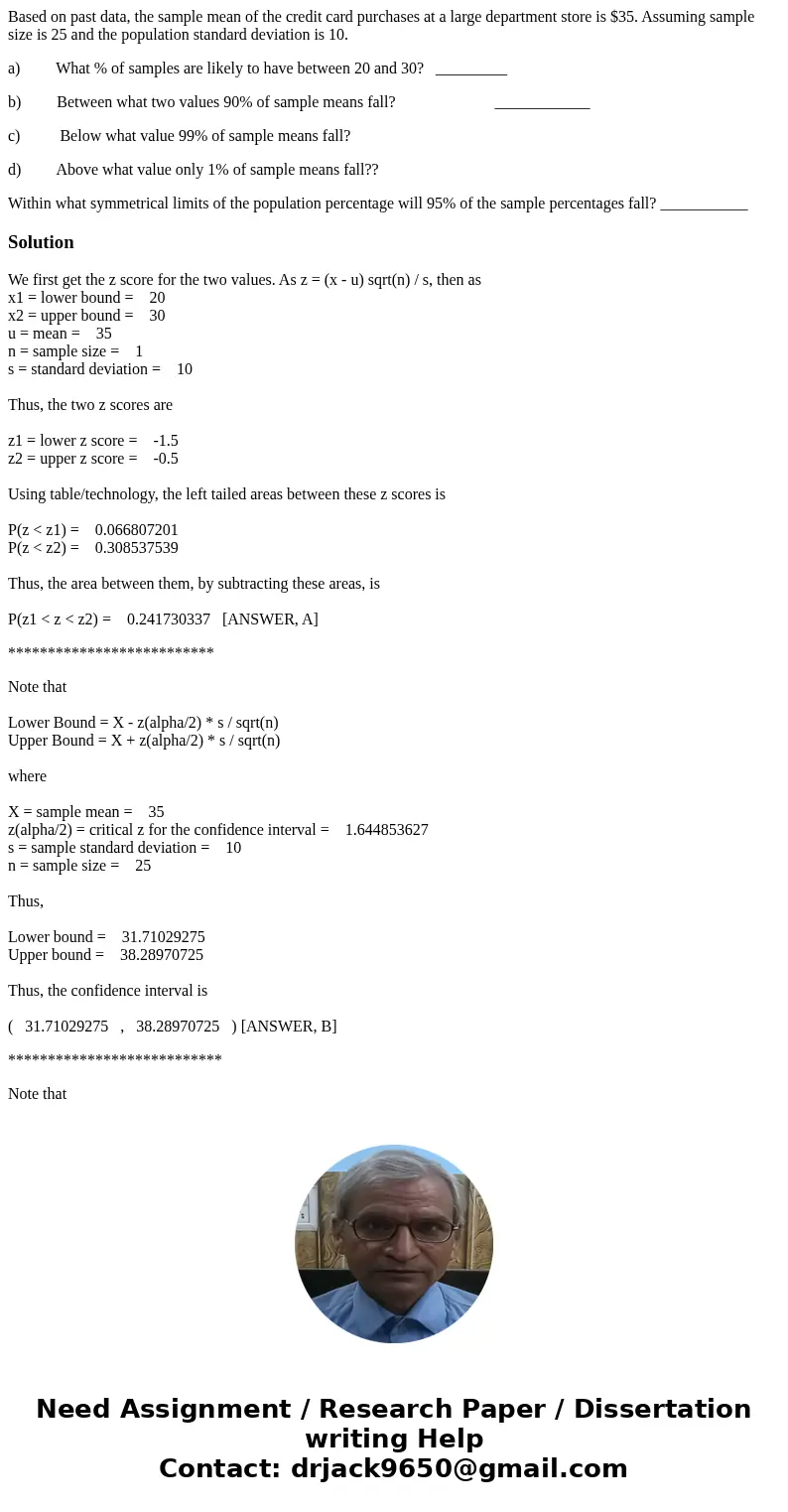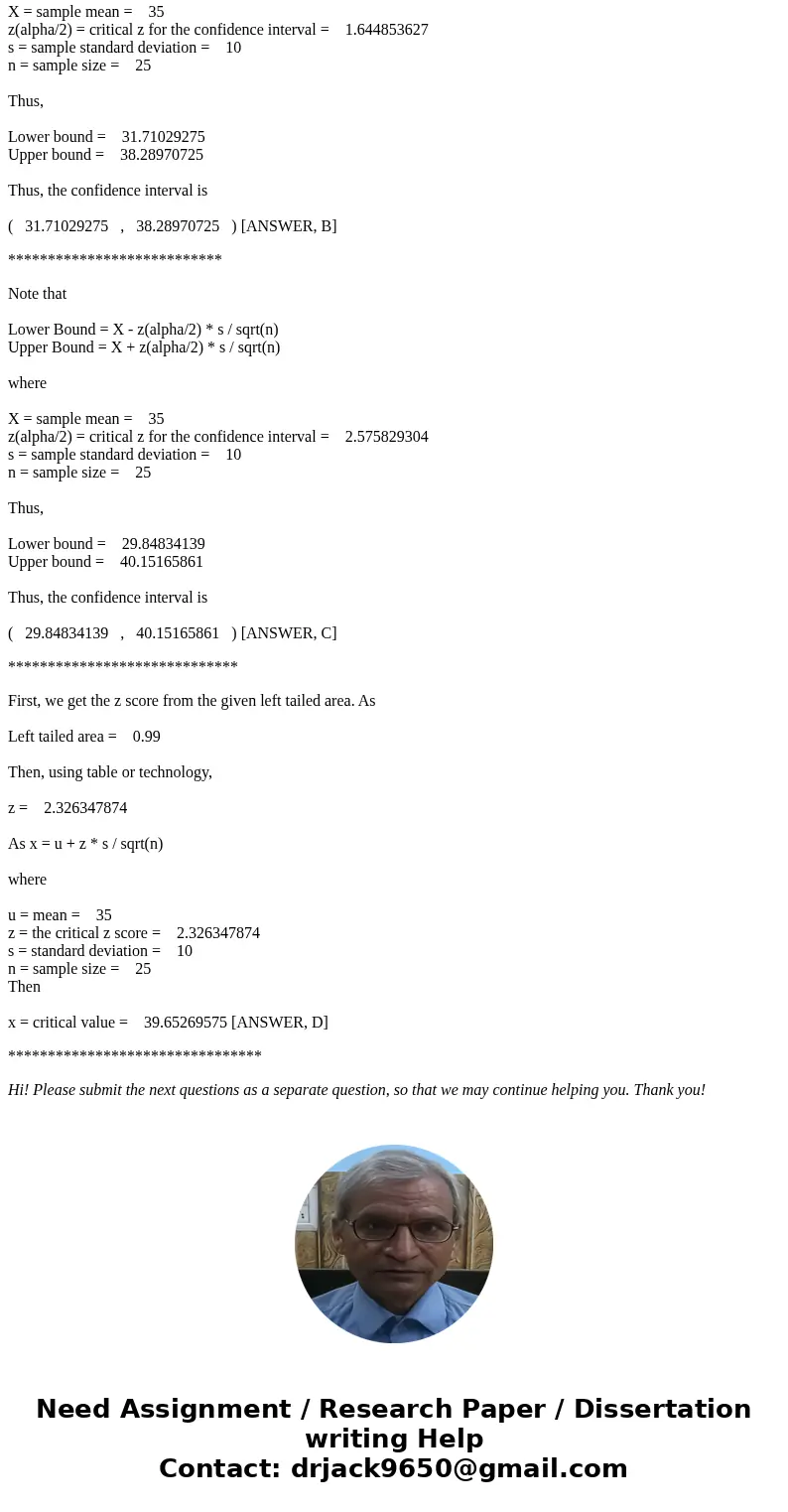Based on past data the sample mean of the credit card purcha
Based on past data, the sample mean of the credit card purchases at a large department store is $35. Assuming sample size is 25 and the population standard deviation is 10.
a) What % of samples are likely to have between 20 and 30? _________
b) Between what two values 90% of sample means fall? ____________
c) Below what value 99% of sample means fall?
d) Above what value only 1% of sample means fall??
Within what symmetrical limits of the population percentage will 95% of the sample percentages fall? ___________
Solution
We first get the z score for the two values. As z = (x - u) sqrt(n) / s, then as
x1 = lower bound = 20
x2 = upper bound = 30
u = mean = 35
n = sample size = 1
s = standard deviation = 10
Thus, the two z scores are
z1 = lower z score = -1.5
z2 = upper z score = -0.5
Using table/technology, the left tailed areas between these z scores is
P(z < z1) = 0.066807201
P(z < z2) = 0.308537539
Thus, the area between them, by subtracting these areas, is
P(z1 < z < z2) = 0.241730337 [ANSWER, A]
**************************
Note that
Lower Bound = X - z(alpha/2) * s / sqrt(n)
Upper Bound = X + z(alpha/2) * s / sqrt(n)
where
X = sample mean = 35
z(alpha/2) = critical z for the confidence interval = 1.644853627
s = sample standard deviation = 10
n = sample size = 25
Thus,
Lower bound = 31.71029275
Upper bound = 38.28970725
Thus, the confidence interval is
( 31.71029275 , 38.28970725 ) [ANSWER, B]
***************************
Note that
Lower Bound = X - z(alpha/2) * s / sqrt(n)
Upper Bound = X + z(alpha/2) * s / sqrt(n)
where
X = sample mean = 35
z(alpha/2) = critical z for the confidence interval = 2.575829304
s = sample standard deviation = 10
n = sample size = 25
Thus,
Lower bound = 29.84834139
Upper bound = 40.15165861
Thus, the confidence interval is
( 29.84834139 , 40.15165861 ) [ANSWER, C]
*****************************
First, we get the z score from the given left tailed area. As
Left tailed area = 0.99
Then, using table or technology,
z = 2.326347874
As x = u + z * s / sqrt(n)
where
u = mean = 35
z = the critical z score = 2.326347874
s = standard deviation = 10
n = sample size = 25
Then
x = critical value = 39.65269575 [ANSWER, D]
********************************
Hi! Please submit the next questions as a separate question, so that we may continue helping you. Thank you!


 Homework Sourse
Homework Sourse